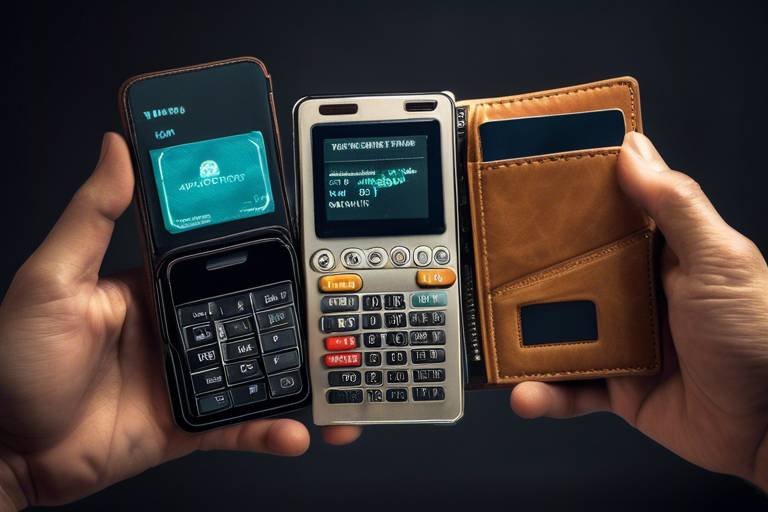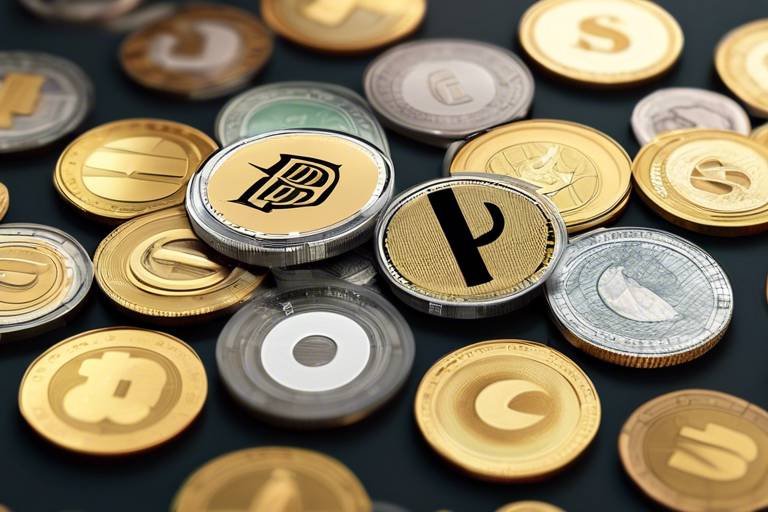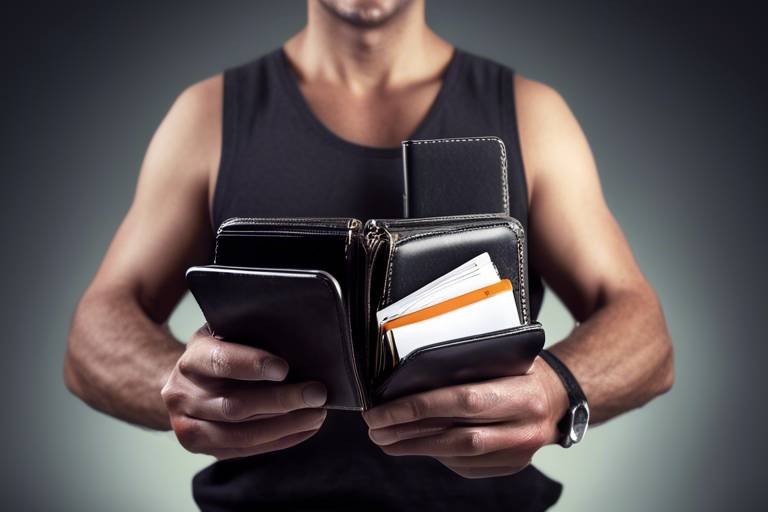The Evolution of Crypto Wallets - From Hot to Cold
In the ever-evolving world of cryptocurrency, the way we store our digital assets has undergone a significant transformation. Crypto wallets are no longer just simple tools for holding coins; they have become sophisticated systems that cater to various user needs. This article explores the progression of cryptocurrency wallets, detailing their types, security features, and the advantages and disadvantages of each to help users make informed choices.
Hot wallets are online cryptocurrency wallets that offer unparalleled convenience and accessibility. Imagine having your cash in a digital bank account that you can access anytime, anywhere; that’s what hot wallets provide. They are typically web-based or mobile applications that allow users to send and receive cryptocurrencies quickly. However, this convenience comes with its own set of risks. Since hot wallets are connected to the internet, they are more susceptible to hacking attempts and malware attacks. Users should be aware of these risks and consider how much of their assets they are willing to keep in such wallets.
On the other end of the spectrum, we have cold wallets, which are offline storage solutions for cryptocurrencies. Think of cold wallets as a safety deposit box in a bank—secure, but not as easily accessible. Cold wallets provide enhanced security by keeping your private keys offline, making them significantly less vulnerable to hacking. There are various types of cold wallets, including hardware wallets and paper wallets, each with its own set of benefits and use cases. For long-term investors who prioritize security over convenience, cold wallets are often the preferred choice.
Hardware wallets are physical devices designed to securely store cryptocurrency offline. These wallets are like USB drives for your crypto, providing a tangible way to protect your assets. They come equipped with advanced security features such as encryption and two-factor authentication. Popular models include the Trezor and Ledger, both of which have garnered positive reviews from the crypto community. Serious investors often favor hardware wallets because they offer a robust level of security that is hard to match with online solutions.
When it comes to choosing a hardware wallet, it’s essential to consider various factors such as security features, user experience, and pricing. Here’s a quick comparison of some leading hardware wallets:
| Wallet | Security Features | User Experience | Price |
|---|---|---|---|
| Trezor Model T | Touchscreen, PIN protection | Intuitive interface | $219 |
| Ledger Nano X | Bluetooth, secure chip | Mobile-friendly | $149 |
Setting up a hardware wallet may seem daunting, but it’s a straightforward process. Here’s a quick step-by-step guide:
- Purchase a hardware wallet from a reputable source.
- Connect the wallet to your computer or mobile device.
- Follow the on-screen instructions to create a new wallet.
- Secure your recovery phrase in a safe place.
- Transfer your cryptocurrencies to the hardware wallet.
By following these steps and implementing best practices, you can maintain wallet security over time and ensure your assets are well-protected.
Paper wallets provide a simple way to store cryptocurrencies offline. By generating a pair of public and private keys, users can print them on paper and store them securely. The beauty of paper wallets lies in their simplicity; they don’t require any special hardware or software. However, users must take precautions to ensure their safety, such as keeping the paper in a secure location and avoiding exposure to water or fire.
When it comes to security, understanding the differences between hot and cold wallets is crucial. Hot wallets are convenient but come with higher risks due to their online nature. Cold wallets, while more secure, may lack the accessibility that some users desire. Here’s a quick overview of their strengths and weaknesses:
| Wallet Type | Strengths | Weaknesses |
|---|---|---|
| Hot Wallets | Convenient, easy to use | Vulnerable to hacking |
| Cold Wallets | Highly secure, offline | Less convenient, requires setup |
Multi-signature wallets require multiple private keys to authorize a transaction, enhancing security. This feature is particularly beneficial for businesses and partnerships where multiple approvals are necessary before moving funds. However, they can also introduce complexities, especially if one of the key holders is unavailable.
Selecting the appropriate wallet depends on individual needs and usage patterns. Consider your security requirements, how often you plan to transact, and your comfort level with technology. Whether you lean towards the convenience of hot wallets or the security of cold wallets, understanding your options will empower you to make the best choice for your cryptocurrency journey.
- What is the most secure type of wallet? Cold wallets, especially hardware wallets, are generally considered the most secure.
- Can I use both hot and cold wallets? Absolutely! Many users opt for a combination of both for convenience and security.
- What happens if I lose my hardware wallet? If you have securely saved your recovery phrase, you can restore your wallet on a new device.

Understanding Hot Wallets
Hot wallets are the lifeline of cryptocurrency trading, offering a blend of convenience and accessibility that makes them incredibly popular among users. Think of them as the bustling cafes of the crypto world, where transactions happen swiftly and effortlessly. These wallets are connected to the internet, allowing users to send and receive cryptocurrencies on the fly. Whether you're a casual trader or someone who enjoys the thrill of day trading, hot wallets cater to your needs with ease.
One of the standout features of hot wallets is their user-friendly interface. Most hot wallets are designed with simplicity in mind, making it easy for even the most novice users to navigate. You can think of them as your trusty smartphone apps that allow you to manage your funds with just a few clicks. From mobile wallets like Trust Wallet or Coinbase Wallet to web-based options such as MetaMask, the choices are abundant, each offering unique functionalities tailored to different user preferences.
However, with great convenience comes great responsibility. While hot wallets are fantastic for quick transactions, they also come with potential risks. Since these wallets are online, they are susceptible to hacking and phishing attacks. Imagine leaving your front door wide open in a bustling city; it’s easy for unwanted visitors to come in. Similarly, having your funds in a hot wallet without proper security measures can lead to significant losses. It's essential to adopt best practices such as enabling two-factor authentication (2FA) and using strong, unique passwords to mitigate these risks.
In terms of use cases, hot wallets are ideal for:
- Frequent traders who need quick access to their assets.
- Users who engage in daily transactions, such as purchasing goods and services with cryptocurrency.
- Individuals who are new to cryptocurrency and want to familiarize themselves with the ecosystem.
As you can see, hot wallets provide a gateway to the world of cryptocurrency, allowing users to engage actively in trading and transactions. However, it’s crucial to weigh the benefits against the risks and ensure you have adequate security measures in place. By understanding the dynamics of hot wallets, you can make informed decisions that align with your trading style and risk tolerance.
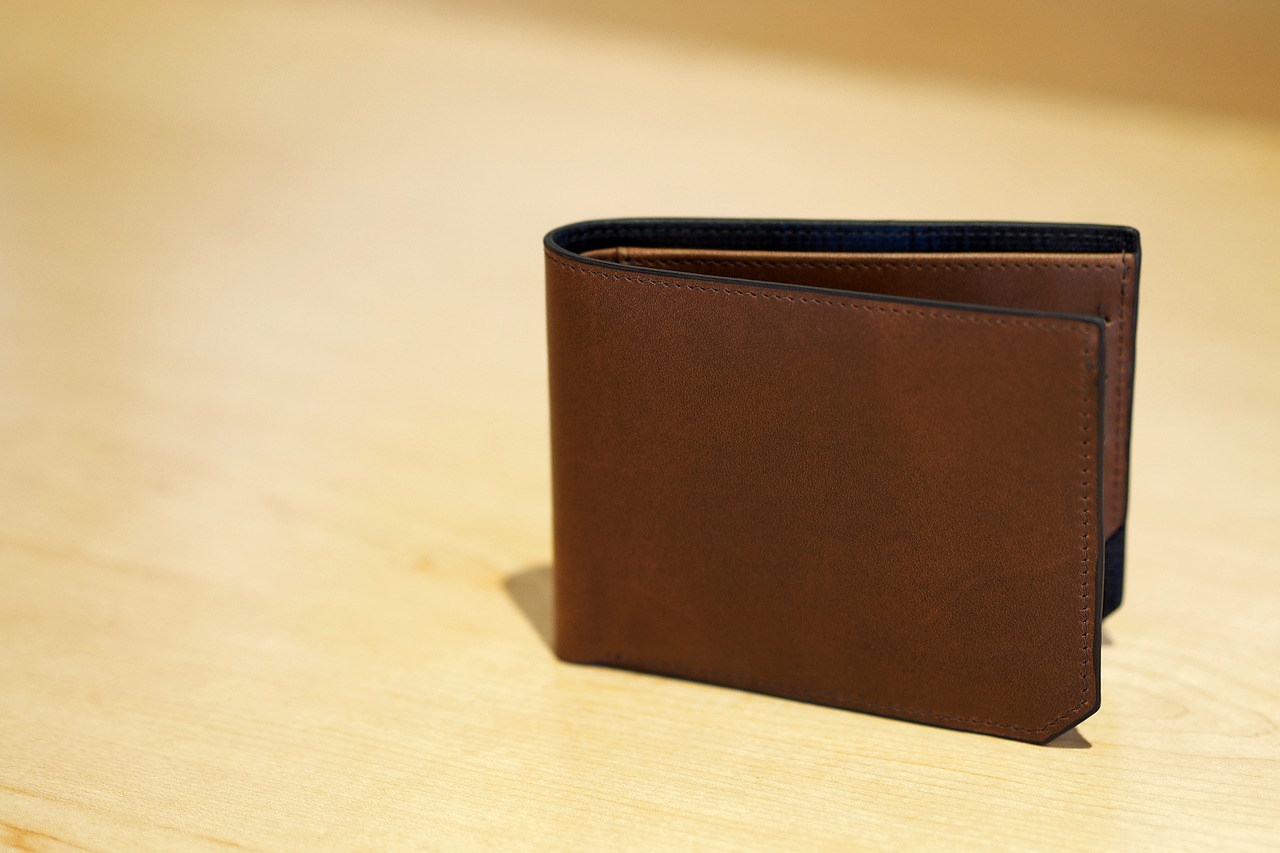
Exploring Cold Wallets
When it comes to safeguarding your cryptocurrency, cold wallets are like the Fort Knox of digital asset storage. Unlike their online counterparts, cold wallets are designed to keep your funds as secure as possible by storing them offline. This means that they are not connected to the internet, making them less vulnerable to hacking attempts and other online threats. But what exactly are cold wallets, and why should you consider using one?
Cold wallets come in various forms, primarily categorized into hardware wallets and paper wallets. Each type has its unique features and benefits, making them suitable for different users depending on their needs and preferences. For instance, hardware wallets are physical devices that resemble USB drives and are built specifically for storing cryptocurrencies securely. On the other hand, paper wallets involve printing your private keys and QR codes on paper, allowing you to keep your assets entirely offline.
One of the most significant advantages of cold wallets is their enhanced security. Since these wallets are not connected to the internet, they are virtually immune to online attacks, phishing schemes, and malware. This makes them an ideal choice for individuals who hold a substantial amount of cryptocurrency and want to ensure their investments are protected. However, it's essential to note that while cold wallets are highly secure, they also come with their own set of challenges. For instance, losing access to your cold wallet, whether through physical loss or damage, can result in the permanent loss of your funds.
Another critical aspect to consider is the ease of use. While hot wallets offer instant access to your funds for trading or transactions, cold wallets require a bit more effort. Users need to connect their hardware wallet to a computer or scan their paper wallet to access their funds, which can be a hindrance for those who prefer quick transactions. However, this trade-off is often worth it for the added security.
In summary, cold wallets are essential tools for anyone serious about cryptocurrency investment. They provide a secure way to store your assets, protecting them from the myriad of online threats that exist in the digital landscape. However, potential users should weigh the benefits against the challenges, ensuring they choose a wallet that aligns with their investment strategy and security needs.
Before diving into cold wallets, it's essential to understand their functionality and how they fit into your overall cryptocurrency strategy. This knowledge will empower you to make informed decisions that will keep your investments safe.
- What is the primary advantage of using a cold wallet? The main advantage is enhanced security, as cold wallets are not connected to the internet, reducing the risk of hacking.
- Can I use a cold wallet for daily transactions? While you can use cold wallets for transactions, they are not as convenient for frequent use compared to hot wallets.
- How do I recover funds from a cold wallet? Recovery typically involves using your recovery phrase or private keys, so it's crucial to keep these secure.
- Are cold wallets completely foolproof? While they are much more secure than hot wallets, cold wallets can still be vulnerable to physical theft or loss if not managed properly.
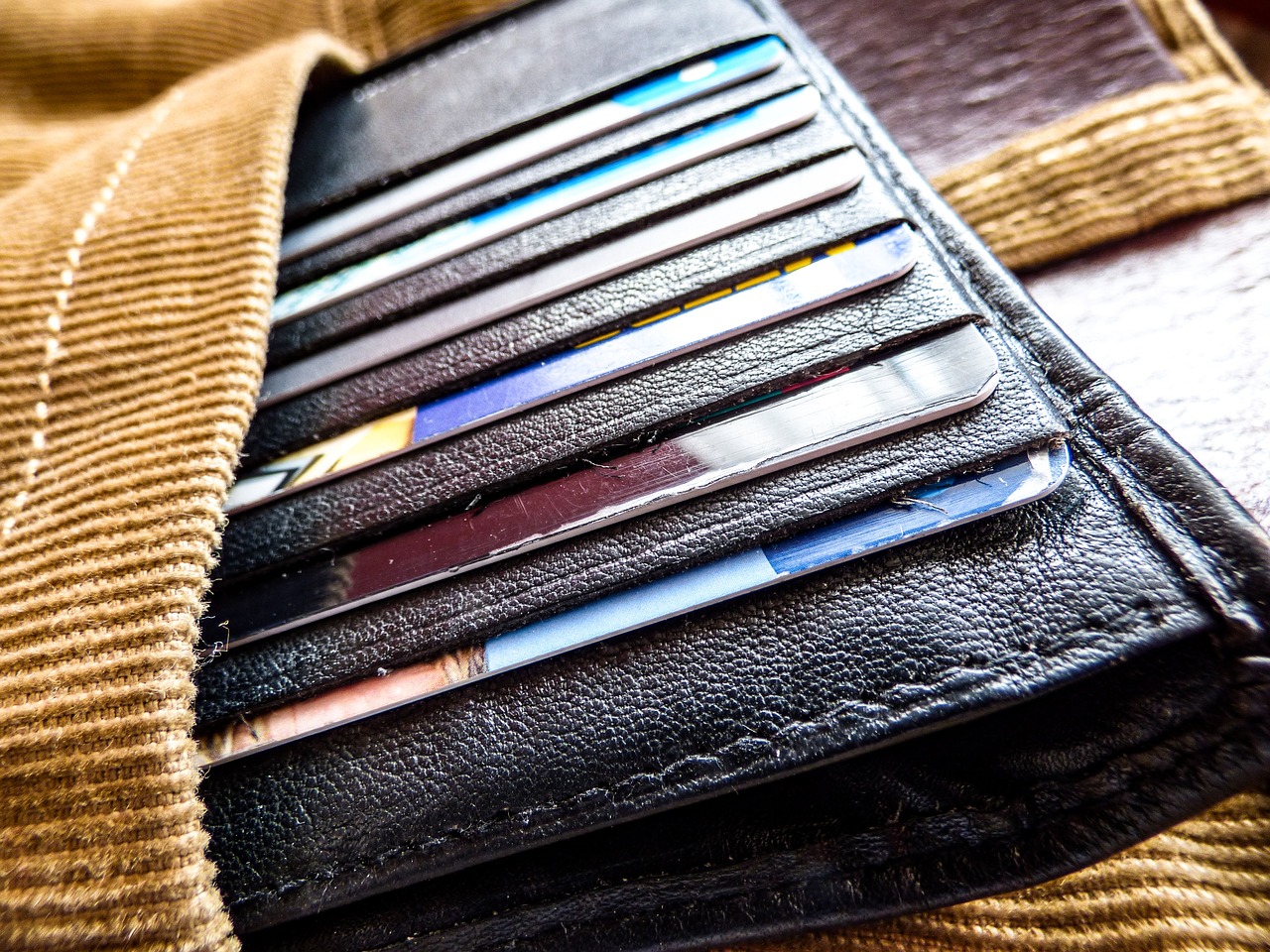
Hardware Wallets
When it comes to securing your cryptocurrency, stand out as one of the most reliable options available. These are physical devices, akin to USB drives, specifically designed to store your digital assets offline. Imagine them as a safe deposit box for your cryptocurrencies; they provide a robust barrier against online threats, making them a favorite among serious investors. But what exactly makes hardware wallets so appealing?
One of the primary features of hardware wallets is their ability to keep your private keys, which are essential for accessing your cryptocurrency, completely offline. This isolation from the internet significantly reduces the risk of hacking, phishing attacks, and malware that can compromise your funds. For instance, when you want to make a transaction, the hardware wallet connects to your computer or mobile device temporarily, allowing you to sign the transaction without exposing your private keys. It's like having a vault that only opens when you need it, ensuring your valuables are safe when you’re not actively using them.
There are several popular models of hardware wallets on the market, each offering unique features and varying levels of user experience. Some well-known brands include:
- Ledger Nano S - A compact and affordable option, ideal for beginners.
- Trezor Model T - Known for its user-friendly interface and touchscreen feature.
- Ledger Nano X - Offers Bluetooth connectivity for mobile transactions.
Each of these devices has its own set of advantages. For example, the Ledger Nano S is highly portable and budget-friendly, making it a great choice for those new to the crypto world. On the other hand, the Trezor Model T provides an intuitive touchscreen experience, allowing for easier navigation through your assets. The Ledger Nano X, with its Bluetooth capabilities, is perfect for users who prefer managing their cryptocurrencies on the go.
Another reason why hardware wallets are favored by serious investors is their durability and reliability. Unlike software wallets that can be vulnerable to software bugs or online threats, hardware wallets are built with security in mind. They often come with features such as PIN protection and seed recovery phrases that ensure you can regain access to your funds even if the device is lost or damaged. However, it’s crucial to store your recovery phrase securely, as anyone with access to it can restore your wallet and access your funds.
In conclusion, hardware wallets represent a secure and effective way to store your cryptocurrencies, especially for those who hold significant amounts. They combine convenience with unmatched security features, making them an essential tool for anyone serious about protecting their digital assets. Whether you are a seasoned trader or just starting your crypto journey, investing in a hardware wallet is a decision that can provide peace of mind in an often volatile market.

Popular Hardware Wallets
When it comes to securing your cryptocurrency investments, hardware wallets are often regarded as the gold standard. These devices prioritize security while providing a user-friendly experience. Let’s dive into some of the most popular hardware wallets available today, examining their unique features and what makes them stand out in the crowded market.
One of the top contenders is the Trezor Model T. This wallet is known for its sleek design and intuitive touchscreen interface, making it incredibly easy to navigate. With support for over 1,800 cryptocurrencies, it offers extensive compatibility. The Trezor Model T also emphasizes security with its open-source software, allowing users to verify the code for themselves. Its recovery seed feature ensures that even if the device is lost or damaged, users can restore their funds with ease.
Another strong player is the Ledger Nano X. This wallet is particularly favored for its Bluetooth capability, allowing users to manage their assets on the go via mobile devices. It supports a wide range of cryptocurrencies as well, with a total of up to 100 apps that can be installed simultaneously. The Ledger Nano X also boasts advanced security features, including a secure element chip that keeps private keys safe from potential threats.
For those who prefer a more budget-friendly option, the Ledger Nano S remains a popular choice. While it lacks Bluetooth functionality, it still provides robust security and supports over 1,500 cryptocurrencies. The Ledger Nano S is compact and portable, making it an excellent option for users who want to keep their digital assets secure without breaking the bank.
In addition to these, the KeepKey is worth mentioning. With its large screen and simple setup process, it appeals to newcomers in the crypto space. KeepKey integrates seamlessly with the ShapeShift platform, allowing users to exchange cryptocurrencies directly from the wallet. Although it supports fewer coins compared to its competitors, its security features and ease of use make it a solid option for those starting their cryptocurrency journey.
Here’s a quick comparison table to summarize the key features of these popular hardware wallets:
| Wallet | Bluetooth | Supported Coins | Key Features |
|---|---|---|---|
| Trezor Model T | No | 1,800+ | Touchscreen, Open-source, Recovery Seed |
| Ledger Nano X | Yes | 1,800+ | Bluetooth, Secure Element Chip, Multi-currency |
| Ledger Nano S | No | 1,500+ | Compact, Affordable, Multi-currency |
| KeepKey | No | 40+ | Large Screen, ShapeShift Integration, User-friendly |
Choosing the right hardware wallet can be a game-changer for your cryptocurrency journey. Each of these wallets has its strengths, catering to different user needs and preferences. Whether you prioritize advanced security features, ease of use, or compatibility with a wide range of cryptocurrencies, there’s a hardware wallet out there that fits your criteria. Remember, the best wallet is one that aligns with your individual requirements and provides peace of mind when managing your digital assets.
Q: What is a hardware wallet?
A: A hardware wallet is a physical device designed to securely store cryptocurrencies offline, providing enhanced security compared to online wallets.
Q: Are hardware wallets safe?
A: Yes, hardware wallets are generally considered very safe due to their offline storage and advanced security features, such as secure element chips and recovery seeds.
Q: Can I use multiple hardware wallets?
A: Absolutely! Many users choose to use multiple wallets to diversify their security and manage different cryptocurrencies more effectively.
Q: What should I do if I lose my hardware wallet?
A: If you lose your hardware wallet, you can recover your funds using the recovery seed that you should have securely stored when setting up the wallet.
Q: How do I choose the best hardware wallet for me?
A: Consider factors such as security features, supported cryptocurrencies, user experience, and your budget to determine which hardware wallet best suits your needs.

Setting Up Hardware Wallets
Setting up a hardware wallet might seem daunting at first, but once you get the hang of it, you'll realize it's as easy as pie! First things first, you'll need to choose a reputable hardware wallet brand. Popular options include Ledger, Trezor, and KeepKey. Each of these brands offers unique features, but the fundamental setup process is quite similar. Once you’ve got your wallet in hand, start by connecting it to your computer or mobile device using the provided USB cable.
After connecting, you’ll typically be prompted to download the corresponding wallet software from the manufacturer’s official website. This software is crucial as it allows you to manage your cryptocurrencies. Make sure to avoid any third-party sites to prevent potential security risks. Once the software is installed, open it up and follow the on-screen instructions to initialize your device. This usually involves creating a new wallet or restoring an existing one if you have a recovery phrase.
One of the most critical steps in setting up your hardware wallet is securing your recovery phrase. This phrase is a series of words that acts as a backup for your wallet. Write it down on paper and store it in a safe place—**never** share it with anyone! If someone gains access to your recovery phrase, they can access your funds. To further enhance security, consider using a fireproof safe or a safety deposit box for storage.
Next, you’ll be prompted to set a PIN code. This code adds an additional layer of protection. Make sure it's something memorable yet hard for others to guess. After you’ve set up your PIN, your hardware wallet will generate a public address. This is the address you’ll share with others when you want to receive cryptocurrency. Remember, your public address is safe to share, but your private keys and recovery phrase should remain confidential.
Finally, familiarize yourself with the wallet interface. Spend some time exploring the features available. Most hardware wallets allow you to send, receive, and manage multiple cryptocurrencies, so take advantage of these functionalities. To ensure that your wallet remains secure over time, regularly update the firmware as recommended by the manufacturer. Keeping the software up-to-date helps protect against vulnerabilities and enhances overall security.
In summary, setting up a hardware wallet involves a few straightforward steps: connect your device, download the wallet software, secure your recovery phrase, set your PIN, and explore the interface. With these steps, you’ll have a robust security solution for your cryptocurrencies, giving you peace of mind as you navigate the exciting world of digital assets.
- What is a hardware wallet? - A hardware wallet is a physical device that securely stores your cryptocurrency offline, protecting it from online threats.
- How do I choose the right hardware wallet? - Consider factors like security features, supported cryptocurrencies, user reviews, and price when selecting a hardware wallet.
- Can I recover my funds if I lose my hardware wallet? - Yes, as long as you have your recovery phrase, you can restore your wallet on a new device.
- How often should I update my hardware wallet's firmware? - It's best to check for updates regularly and install them as they become available to ensure maximum security.

Paper Wallets
When it comes to storing cryptocurrencies, offer a unique blend of simplicity and security. Essentially, a paper wallet is a physical document that contains your public and private keys, allowing you to access your crypto holdings without the need for an online wallet. Think of it as a treasure map: it tells you where your treasure is buried, but if someone gets hold of it, they can easily dig it up. This makes paper wallets an appealing option for those looking to keep their assets safe from online threats.
Creating a paper wallet is relatively straightforward. You can use various online generators that create a pair of keys for you, but it's crucial to ensure that you do this in a secure environment. Ideally, you should generate your keys on an offline device to minimize the risk of exposure to malware or hacking attempts. Once you've generated your wallet, simply print it out, and voilà! You now have a paper wallet. However, remember that this document is your key to the kingdom; losing it means losing access to your funds forever.
One of the main advantages of paper wallets is their offline nature. Since they are not connected to the internet, they are immune to hacking and phishing attacks. This makes them particularly appealing for long-term storage, where you might not need immediate access to your funds. However, there are some precautions to consider. For instance, you should store your paper wallet in a safe place, like a safe deposit box or a fireproof safe, to protect it from physical damage or theft.
Additionally, while paper wallets are generally considered secure, they do have some drawbacks. For example, if you accidentally damage or lose your paper wallet, recovering your funds can be nearly impossible. Moreover, if you plan to make frequent transactions, using a paper wallet can be cumbersome. You’d need to import your keys back into a digital wallet every time you want to send or receive cryptocurrencies, which can be a hassle.
In summary, paper wallets can be a great option for those looking to securely store their cryptocurrencies offline. They provide a high level of security against online threats, but users must exercise caution to protect their physical wallets. If you're considering using a paper wallet, remember to create it in a secure environment, store it safely, and be aware of the challenges associated with accessing your funds.
Frequently Asked Questions
- What is a paper wallet? A paper wallet is a physical document containing your cryptocurrency's public and private keys, allowing you to store your assets offline.
- How do I create a paper wallet? You can create a paper wallet using a secure online generator, preferably on an offline device, and then print it out.
- What are the risks of using a paper wallet? The main risks include losing the wallet, damaging it, or having it stolen. If someone obtains your paper wallet, they can access your funds.
- Can I use a paper wallet for frequent transactions? Paper wallets are not ideal for frequent transactions due to the inconvenience of manually importing keys to a digital wallet each time.
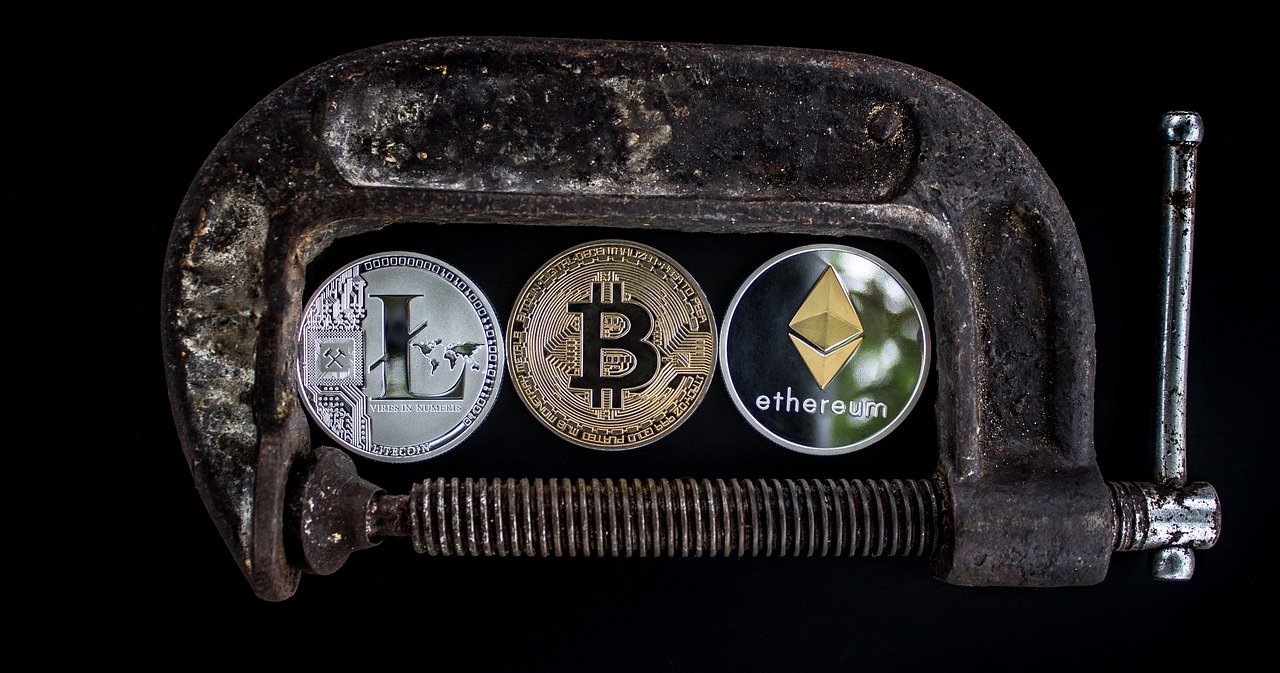
Comparing Security Features
When it comes to cryptocurrency wallets, security is paramount. The digital landscape is fraught with risks, and understanding the security features of both hot and cold wallets can be the difference between keeping your assets safe and losing them to cybercriminals. Hot wallets, while incredibly convenient, expose users to various vulnerabilities due to their constant connection to the internet. On the other hand, cold wallets provide a more secure alternative by keeping your funds offline. But what does that mean for you as a user?
Hot wallets are like leaving your valuables on the kitchen counter; they are easily accessible but also easily taken. They often come with features like two-factor authentication and encryption, which help mitigate risks. However, these features don't make them invulnerable. Phishing attacks, malware, and hacking attempts are rampant, and a single mistake can lead to a significant loss. Therefore, if you're using a hot wallet, it's crucial to stay vigilant and employ best practices, such as regularly updating your software and using strong, unique passwords.
Conversely, cold wallets are akin to a safe deposit box in a bank—they're not just secure; they're designed to be inaccessible to anyone but you. These wallets can be hardware devices or even paper wallets, and they store your private keys offline. This offline nature significantly reduces the risk of hacks and unauthorized access. However, it's important to remember that with great security comes great responsibility. If you lose your cold wallet or forget your recovery phrase, you may permanently lose access to your cryptocurrencies.
To give you a clearer picture, let's compare the key security features of hot and cold wallets:
| Feature | Hot Wallets | Cold Wallets |
|---|---|---|
| Accessibility | High - Always online | Low - Requires physical access |
| Security Level | Moderate - Vulnerable to online threats | High - Offline storage minimizes risks |
| Backup Options | Cloud backups available | Manual backups required (e.g., writing down keys) |
| Best Use Case | Frequent transactions | Long-term storage |
In summary, both types of wallets have their own sets of advantages and disadvantages. Hot wallets excel in convenience and speed, making them ideal for day-to-day transactions. However, they come with a higher risk profile. Cold wallets, while less convenient, offer unparalleled security for those looking to store their assets long-term without the fear of online threats. Understanding these differences is crucial for making informed decisions about how to protect your cryptocurrency assets.
- What is the safest type of wallet for cryptocurrency? Cold wallets are generally considered the safest due to their offline nature.
- Can I use both hot and cold wallets? Yes, many users opt for a combination of both, using hot wallets for daily transactions and cold wallets for long-term storage.
- What should I do if I lose my hardware wallet? If you have a backup of your recovery phrase, you can recover your funds; otherwise, they may be lost permanently.

Multi-Signature Wallets
Multi-signature wallets, often referred to as multi-sig wallets, are a fascinating innovation in the world of cryptocurrency security. Imagine a bank vault where more than one key is required to open the door—this is essentially how multi-signature wallets operate. Instead of relying on a single private key to authorize transactions, these wallets require multiple keys from different parties. This added layer of security is particularly beneficial for businesses and partnerships, where trust needs to be established among multiple stakeholders.
One of the primary advantages of multi-signature wallets is their ability to significantly reduce the risk of theft. If a single key is compromised, the funds remain secure as additional keys are needed for any transaction. For example, a wallet might be configured to require two out of three keys to authorize a transaction. This means that even if one key is lost or stolen, the funds are still protected as long as the other keys are safe. This feature makes multi-signature wallets an attractive option for organizations that manage large amounts of cryptocurrency.
However, while multi-signature wallets offer enhanced security, they are not without their challenges. The complexity of managing multiple keys can be daunting, especially for those who are not tech-savvy. If a key is lost or misplaced, accessing funds can become a nightmare. Furthermore, the setup process can be more intricate than traditional wallets, requiring users to understand how to configure the wallet correctly and manage the keys securely.
To illustrate how multi-signature wallets work, consider the following table:
| Configuration | Keys Required | Use Case |
|---|---|---|
| 2 of 3 | 3 | Partnerships, small businesses |
| 3 of 5 | 5 | Organizations with multiple stakeholders |
| 1 of 2 | 2 | Personal use for added security |
In summary, multi-signature wallets provide a robust solution for enhancing the security of cryptocurrency holdings. They are particularly suited for businesses and partnerships, where multiple approvals can help prevent fraud and unauthorized transactions. However, the complexity of managing multiple keys can pose challenges, requiring users to be diligent in their approach to security. As the cryptocurrency landscape continues to evolve, multi-signature wallets are likely to remain a vital tool in safeguarding digital assets.
As you consider your options for cryptocurrency storage, think about whether a multi-signature wallet aligns with your needs. Do you prioritize security over convenience? Are you part of a team that requires shared access to funds? If so, a multi-signature wallet could be the perfect fit for you.
- What is a multi-signature wallet?
A multi-signature wallet requires more than one private key to authorize a transaction, enhancing security. - Who should use multi-signature wallets?
They are ideal for businesses, partnerships, or individuals who want an extra layer of security for their cryptocurrency holdings. - What happens if I lose one of the keys?
If the wallet is set up correctly, losing one key may not result in losing access to funds, but it can complicate transactions. - Are multi-signature wallets easy to set up?
The setup can be more complex than traditional wallets, so users should familiarize themselves with the process.
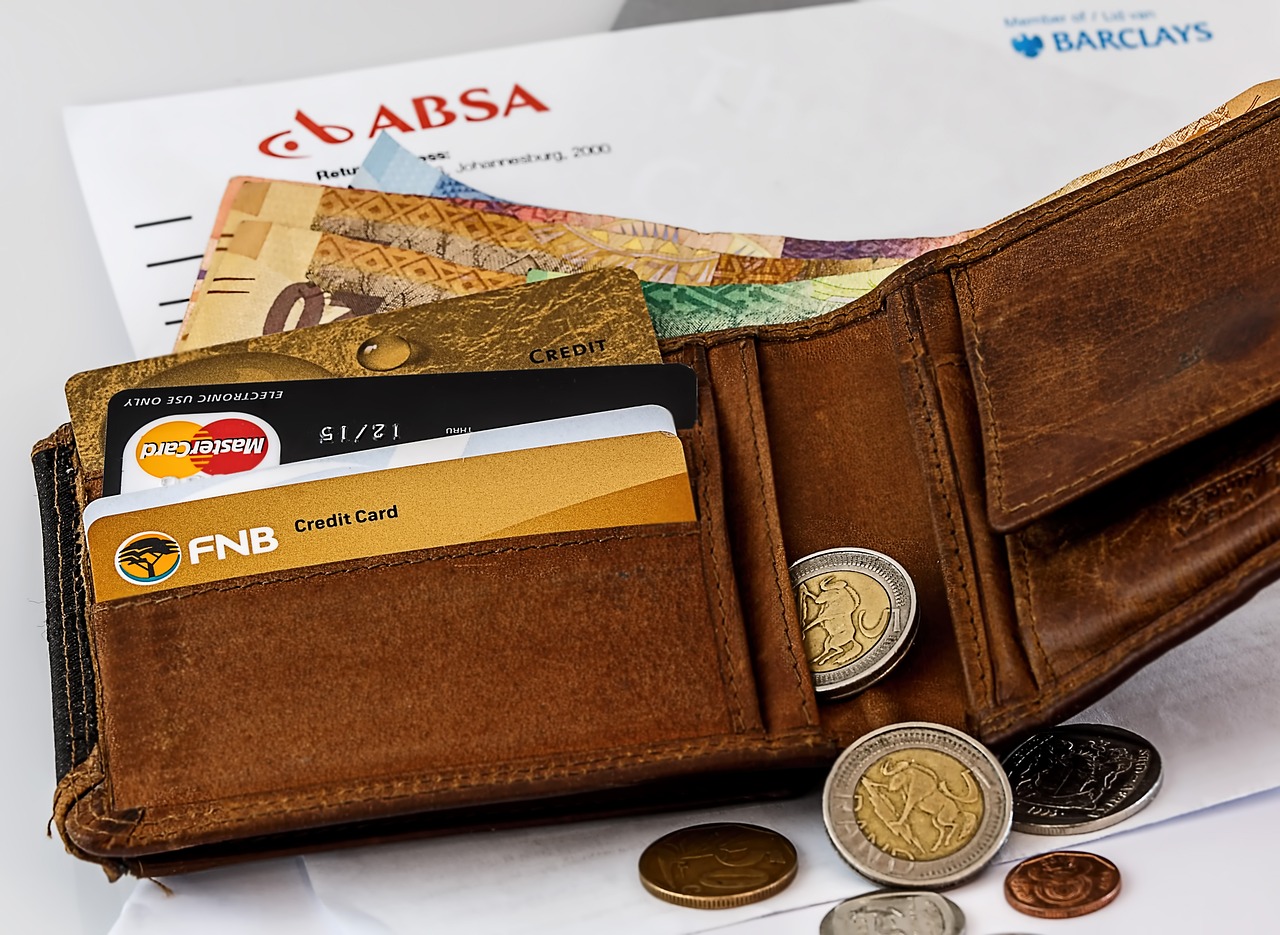
Choosing the Right Wallet
When it comes to selecting the right cryptocurrency wallet, the decision can feel overwhelming, especially with the myriad of options available today. It's crucial to consider your own needs and usage patterns. Are you a casual trader who makes frequent transactions, or are you a long-term investor looking to hold your assets securely? Understanding your priorities will guide you in making the best choice.
Hot wallets, for instance, are fantastic for those who prioritize convenience and speed. They allow for quick access to your funds, making them ideal for day-to-day trading or for those who actively participate in the crypto market. However, the trade-off is that they are more susceptible to hacks and security breaches. If you’re someone who frequently engages in transactions, a hot wallet might suit your lifestyle, but remember to keep only what you need for trading in these wallets.
On the flip side, cold wallets are perfect for individuals who are serious about security. If you’re planning to hold your cryptocurrencies for the long haul, cold storage solutions—like hardware or paper wallets—offer a level of protection that hot wallets simply can’t match. These wallets are not connected to the internet, making them far less vulnerable to cyber threats. However, they do require a bit more effort to set up and manage. If you’re willing to invest that time, the peace of mind can be well worth it.
To help you decide, consider the following factors:
- Security Level: How much security do you need? If you’re holding a significant amount of cryptocurrency, cold wallets are generally the safest option.
- Frequency of Transactions: Do you trade often? If so, a hot wallet might be more convenient for you.
- User Experience: How comfortable are you with technology? Some wallets are user-friendly, while others may require more technical know-how.
- Cost: While many hot wallets are free, hardware wallets come with a price tag. Assess your budget before making a decision.
Ultimately, the right wallet for you depends on your unique situation. It may even make sense to use a combination of both hot and cold wallets—keeping a portion of your assets in a hot wallet for easy access while securing the bulk of your holdings in a cold wallet. This hybrid approach can provide a balance of convenience and security, allowing you to enjoy the best of both worlds.
Q: What is the safest type of wallet?
A: Cold wallets, such as hardware and paper wallets, are generally considered the safest options for storing cryptocurrencies long-term.
Q: Can I use both hot and cold wallets?
A: Yes! Many users opt for a combination of both to balance accessibility with security.
Q: How do I ensure my wallet is secure?
A: Always use strong passwords, enable two-factor authentication, and keep your recovery phrases safe.
Frequently Asked Questions
- What is a hot wallet?
A hot wallet is an online cryptocurrency wallet that allows users to easily access and manage their digital assets. They are typically connected to the internet, making them convenient for frequent transactions. However, this connectivity also exposes them to potential cyber threats, so it's essential to be cautious.
- What are the main advantages of using a cold wallet?
Cold wallets provide enhanced security by storing cryptocurrencies offline. This means they are less vulnerable to hacking attempts or online fraud. They're ideal for long-term storage, allowing users to keep their assets safe without the constant worry of online threats.
- How do hardware wallets work?
Hardware wallets are physical devices designed to securely store your cryptocurrency offline. They generate and store your private keys on the device itself, which means your assets are safe even if your computer is compromised. To access your funds, you simply connect the wallet to your computer and use it to sign transactions.
- Can I create a paper wallet easily?
Yes! Creating a paper wallet is quite straightforward. You can use online tools that generate a pair of public and private keys for you. However, ensure you do this in a secure environment, preferably offline, to avoid exposure to malware or hackers.
- What are multi-signature wallets?
Multi-signature wallets require multiple private keys to authorize a transaction, significantly enhancing security. This setup is particularly beneficial for businesses or partnerships, as it ensures that no single individual can access the funds without the consent of others involved.
- How do I choose the right wallet for my needs?
Choosing the right wallet depends on your individual needs and how you plan to use your cryptocurrencies. Consider factors like security, accessibility, and how frequently you intend to make transactions. For long-term storage, cold wallets may be better, while hot wallets are suitable for regular trading.

